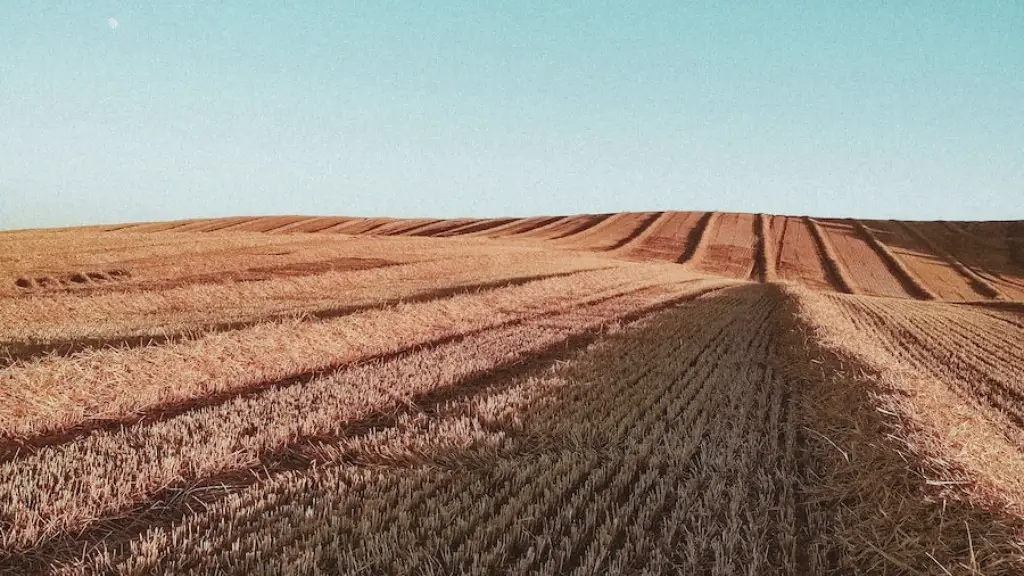Agriculture is one of the mainstays of most developing countries.However, there has been a gradual decline in the overall agricultural production in recent years. There are a multitude of reasons why this has been occurring. Firstly, the development of shifting cultivation has led to a decrease in crop cultivation. This is because the land is not suitable for regular cultivation due to the lack of water and soil fertility. It also makes it difficult to sustain agricultural activities from one season to the next. Secondly, the rising cost of resources and inputs used in agriculture is making it less profitable for farmers to produce crops. The cost of fuel, fertilizer, tractors, and other inputs are increasing, thus making the production of food more expensive. Thirdly, the increased prevalence of climate change is making it difficult for farmers to adapt to the continuously changing conditions. The crops are subjected to extreme temperatures, floods, and droughts, reducing the yields and making it impossible to sustain their crops. Fourthly, the increasing population has led to the need for more land for housing and commercial development. This has placed pressure on the agricultural lands, reducing the area devoted to crop production.
Natural Resources Presence in Agriculture
Fifthly, the lack of natural resources in agricultural lands is also having an impact. These resources such as water, soil fertility, and nitrogen, are essential for the growth of crops. But due to the over-exploitation of these resources, they are becoming scarce, reducing their availability for crop cultivation. Sixthly, the decreased availability of agricultural labor is also contributing to the decline in agricultural production. The lack of skilled labor and the preference of people to migrate to urban areas has reduced the number of people available to work in agriculture. Lastly, the use of pesticides, herbicides, and other chemicals has led to health risks and environmental degradation, thus making it less sustainable for farmers to grow crops.
Advancing Technology Development and Farming
The development of modern technology has allowed farmers to become more productive. Automation and precision irrigation have increased the efficiency of soil cultivation, allowing better and higher yields. The use of modern fertilizers, pest control methods, and genetic modification have also aided in the increase of yield, thus making agriculture more profitable. The increased access to data and information has also enabled farmers to be more informed about the latest developments and best practices in agriculture, providing them with the knowledge to increase their yields.
Integrating Technology with Sustainable Agriculture
The integration of technology with sustainable practices can improve the quality of crops and reduce the impact on the environment, thus making it a more sustainable and profitable business for farmers. Farmers can use the latest technologies such as precision irrigation, precision planting and harvesting to optimize yield, reduce waste and conserve water. Additionally, integrating sustainable agricultural practices such as crop rotation, composting, and integrated pest management can help farmers reduce their input costs and optimize their production efficiency.
Greater Adoption of Organic Agriculture
An increasing number of consumers are opting for organic products and this has led to an increase in the adoption of organic agriculture. Organic agriculture allows farmers to use natural processes and techniques to produce food without the use of chemical fertilizers and pesticides. This reduces the impact on the environment and also provides nutritious and healthy food products to the consumers. In addition, organic agriculture increases the soil fertility, which is essential for sustainable agriculture.
Alternative Farming Methods
Alternative farming methods such as hydroponics and aquaponics are also becoming popular. These methods use less water and less land, thus making them more suitable for urban environments. Additionally, the use of renewable energy sources such as solar power to drive farming machinery and pumps can reduce the costs of production and increase the efficiency of the farming process.
Financial Support for Farmers
Finally, there is a need for financial support for farmers in order to help them stay competitive in the market. This can be done through government subsidies, tax breaks and credit facilities. Additionally, NGOs and other initiatives have set up funds to support small-scale farmers and help them become more competitive and profitable.

